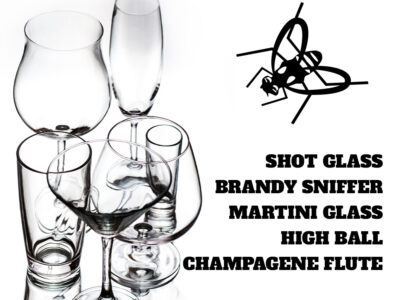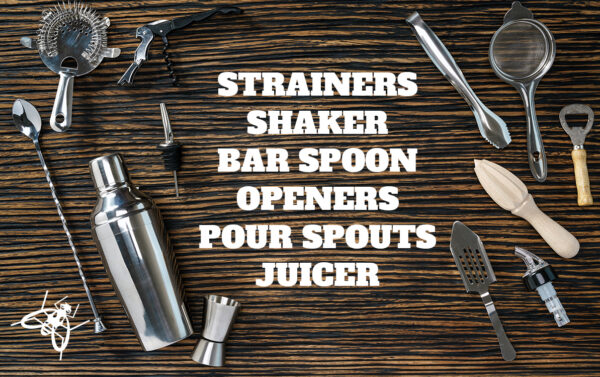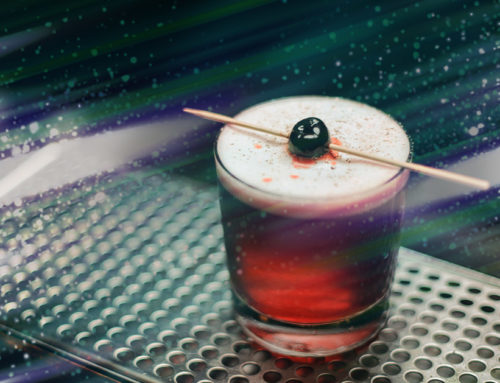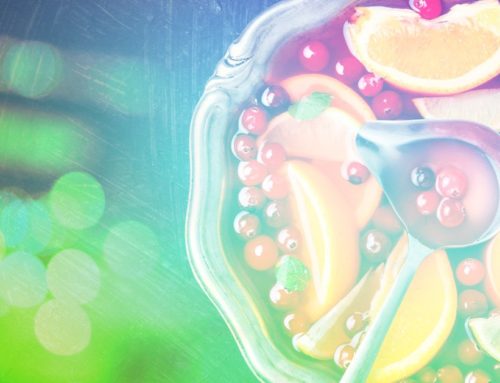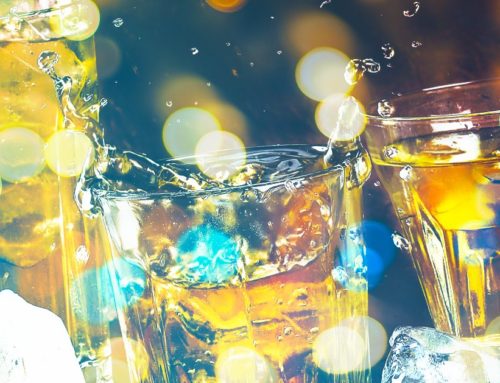Recipes
Cocktail 101: A Beginners Guide To Bartending At Home.
By: Kyle P.
3-6-23
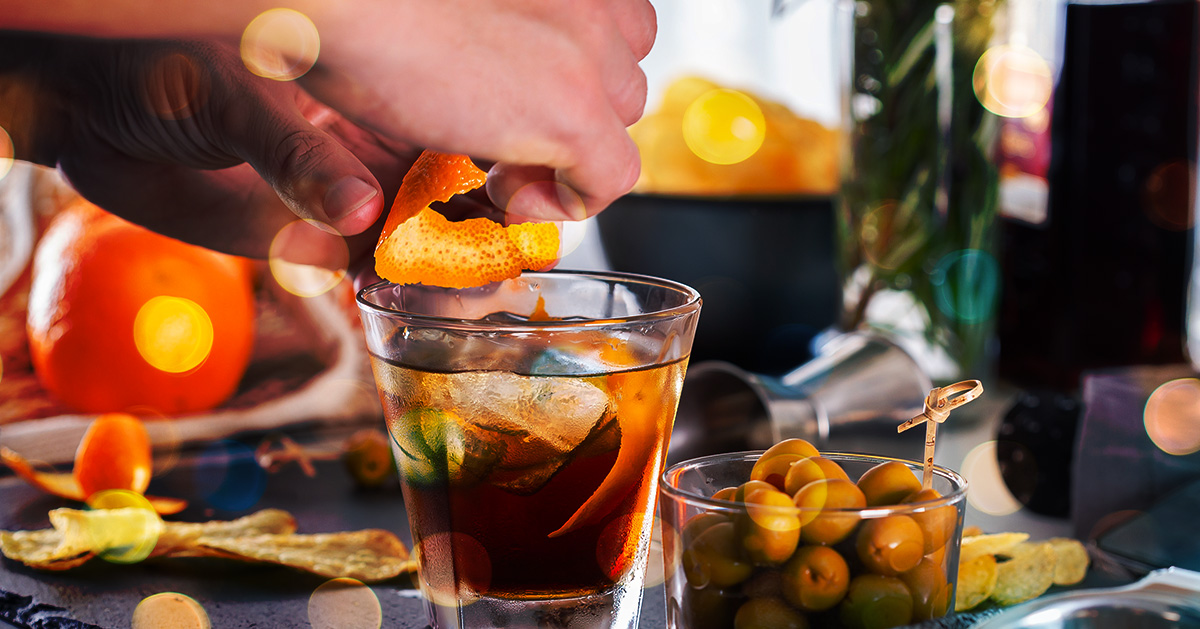
There’s nothing quite like hosting a cocktail party with friends. The sound of ice clinking against glass, the refreshing taste of a well-made cocktail, and the warmth of good company – these are the ingredients for a memorable evening. But how do you go about bartending at home if you’re a beginner? In this article, we’ll provide you with a beginner’s guide to bartending at home, complete with equipment, ingredients, basic techniques, and tips for hosting a successful cocktail party.
Equipment Needed for Bartending at Home
First things first, let’s talk about the essential equipment needed for bartending at home. While you don’t need to break the bank to get started, investing in quality equipment will make a significant difference in the taste and presentation of your cocktails.
Glassware
Here is a comprehensive list of glassware:
- Coupe Glass: A coupe glass is a stemmed glass with a wide, shallow bowl that is often used for serving champagne, cocktails, or desserts. The history of this glass can be traced back to the 17th century in England, where it was used for serving a sparkling wine.
- Martini Glass: A martini glass is a stemmed glass with a wide, conical bowl that is designed for serving cocktails, particularly the classic martini. The history of this glass can be traced back to the early 20th century in America when it became popular during the Prohibition era.
- Shot Glass: A shot glass is a small, cylindrical glass that is typically used for serving small amounts of spirits or liqueurs. The history of this glass can be traced back to the late 19th century in America, where it was used for measuring the amount of liquor served in saloons.
- Whisky Glass: A whisky glass, also known as a rocks glass, is a short, sturdy glass that is designed for serving whisky on the rocks or neat. The history of this glass can be traced back to the early 20th century in America when it became popular among whisky drinkers.
- Margarita Glass: Margarita glass is a stemmed glass with a wide, conical bowl that is designed for serving margaritas or other cocktails. The history of this glass can be traced back to the mid-20th century in Mexico, where it was created specifically for serving the margarita cocktail.
- Nick and Nora Glasses: Nick and Nora glasses are small, stemmed glasses with a wide, rounded bowl that is designed for serving cocktails. The history of these glasses can be traced back to the 1930s in America, where they were featured in the popular “Thin Man” movies.
- Highball Glass: Highball glass is a tall, narrow glass that is designed for serving mixed drinks, such as the classic gin and tonic. The history of this glass can be traced back to the early 20th century in America when it became popular among drinkers who preferred lighter, refreshing cocktails.
- Champagne Flute: A champagne flute is a tall, slender glass with a narrow bowl that is designed for serving champagne or other sparkling wines. The history of this glass can be traced back to the early 18th century in France, where it was created specifically for serving champagne.
- Snifter: A snifter is a short-stemmed glass with a wide, balloon-shaped bowl that is designed for serving brandy or other aged spirits. The history of this glass can be traced back to the 17th century in France, where it was used for sniffing and tasting brandy.
Tools
If you’re looking to start bartending at home, there are a few essential tools that you’ll need to have on hand. Here are some of the most important items you should consider adding to your home bar:
- Shaker: A shaker is an absolute must-have for making cocktails at home. A Boston shaker, which consists of a metal tin and a mixing glass, is the most versatile option.
- Jigger: A jigger is a small measuring cup that is used to measure out precise amounts of liquor. It’s important to use a jigger to ensure that your cocktails are properly balanced.
- Bar spoon: A long, thin bar spoon is used for stirring cocktails. It’s a versatile tool that can also be used to layer drinks and scoop ingredients.
- Strainers: A Hawthorne strainer is used to strain cocktails that have been shaken or stirred with ice. A fine-mesh strainer can also be used to strain out small pieces of fruit or herbs.
- Openers: Corkscrews and bottle openers fit into this category. They will help you pop the top and pull a cork.
- Muddler: A muddler is used to mash ingredients like fruit, herbs, and sugar in the bottom of a glass. This releases the flavors and aromas of the ingredients, which can then be incorporated into the cocktail. Mojito’s are famous for their muddled mint and fresh crushed ice!
- Citrus juicer: Freshly squeezed citrus juice is an essential ingredient in many cocktails. A handheld citrus juicer makes it easy to juice lemons, limes, and oranges.
- Ice bucket and tongs: You’ll need a way to keep your ice cold and accessible while you’re mixing drinks. An ice bucket and tongs are an attractive and functional addition to any home bar.
These are just a few of the essential tools that you’ll need to start bartending at home. As you become more experienced, you may find that you want to add additional tools to your collection, such as a julep strainer or a whipping siphon. But with the basics covered, you’ll be well on your way to making delicious cocktails in the comfort of your own home.
Ingredients Needed for Bartending at Home
Now that you have your equipment, it’s time to talk about the ingredients needed for bartending at home. While the list of ingredients can be endless, we’ll cover the essentials that every beginner should have in their home bar.
Alcohol: The foundation of most cocktails is alcohol, so it’s essential to have a few different types on hand. Vodka, gin, whiskey, and rum are great starting points. Remember to buy quality alcohol, as it will make a significant difference in the taste of your cocktails.
Mixers: Mixers are used to add flavor and balance to your cocktails. Some common mixers include tonic water, soda water, ginger ale, and fruit juices. Remember to use fresh, high-quality mixers for the best taste.
Syrups: Simple syrup isnt the only thing you can use to sweeten your drinks. You can use honey, agave, infused syrups, molasses, brown sugar and more!
Garnishes: Garnishes are the finishing touch to your cocktails and can elevate the presentation and taste. Some garnishes include citrus wedges, fresh herbs, and edible flowers.
Basic Techniques for Bartending at Home
Now that you have your equipment and ingredients, it’s time to talk about the fundamental techniques needed for bartending at home. Here are a few basic techniques to get you started:
Shaking: Shaking is used to mix ingredients and chill the cocktail. Add ice and ingredients to your shaker, shake vigorously for about 15-20 seconds, and strain into your glass. Remember to shake drinks with citrus in them. The shaking action brings out all the flavors from the citrus juice.
Stirring: Stirring is used to mix ingredients and chill the cocktail without diluting it. Add ice and ingredients to your mixing glass, stir for about 20-30 seconds, and strain into your glass. I like to stir drinks that do not have citrus in them.
Muddling: Muddling is used to extract flavor from fresh herbs and fruits. Add your ingredients to your shaker or mixing glass, and use a muddler to gently crush and mix the ingredients. Muddling isn’t just for mint, but citrus peels and other vegetables are on the menu.
Straining: Straining is used to separate the cocktail from any unwanted solids, such as ice or fruit pulp. Use a strainer when pouring your cocktail from the shaker or mixing glass into your serving glass.
These are just a few techniques that you will use to make delicious drinks.
How to Host a Cocktail Party
Now that you have the equipment, ingredients, and basic techniques down, it’s time to talk about hosting a successful cocktail party. Because, let’s face it, having a dozen cocktails all to yourself is a bit irresponsible. Here are a few tips to get you started:
Plan your menu
One of the most important aspects of hosting a cocktail party is deciding on the cocktails you want to serve. Consider the tastes and preferences of your guests, as well as the occasion and theme of your party. It’s a good idea to have a mix of classic and creative cocktails on your menu. Once you’ve decided on your cocktails, make a list of the ingredients you’ll need and purchase them ahead of time. To make your party extra special, consider creating a signature cocktail that reflects your personality or the theme of your party.
Prep ahead of time
To ensure that your bartending process runs smoothly, it’s important to prepare as much as possible ahead of time. This includes making simple syrups, cutting garnishes, and measuring out your ingredients. This will not only save you time during the party, but it will also allow you to enjoy the party alongside your guests.
Create a vibe
The atmosphere of your party is just as important as the drinks you serve. Set the mood with some music, dim lighting, and candles. Create a cozy and inviting atmosphere that encourages your guests to mingle and have a good time. Make sure your bar area is clean and organized, with all the necessary tools and ingredients easily accessible.
Get out of the kitchen

If you don’t have a bar at home chances are you will mix most of your drinks in the kitchen. While this works, I personally love the vibe of being out on a patio, or around a fireplace making drinks. A
bar cart will be essential for this. Or even a dedicated cabinet. And don’t forget the ice bucket! Making cocktails goes through a substantial amount of ice.
Get your guests involved
Encourage your guests to get involved in the bartending process by setting up a cocktail-making station. Provide recipe cards and a variety of ingredients for them to experiment with. This not only adds an element of fun to the party, but it also takes the pressure off of you as the host. You can also consider having a cocktail-making competition or a blind taste test to keep things interesting.
Overall, hosting a successful cocktail party requires careful planning, preparation, and attention to detail. By following these steps, you can create an unforgettable experience for your guests that they’ll be talking about for years to come.
Conclusion
Bartending at home can be a fun and rewarding experience for beginners. By investing in quality equipment, using fresh and high-quality ingredients, and mastering the basic techniques, you can create delicious cocktails for yourself and your guests. With these tips and tricks, you’ll be well on your way to hosting a successful cocktail party that your friends will be talking about for weeks to come. Cheers!
